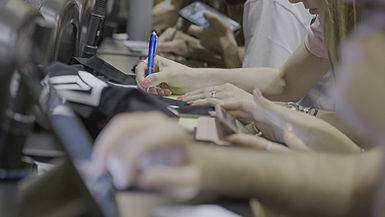
2023 Summer Course on Space and Technology 4All
About
The program focuses on providing advanced techniques of space engineering and understanding the core physics principles related to space exploration. Space industry problems are also considered during the program in addition to technology and legal topics. The theoretical courses cover space science, space technology and chemistry and physics, space applications and legal matters. Participants will train their practical skills during a space workshops (a creative space mission design and a legal drafting process) and an interactive business simulation workshop. All speakers are s experienced in the field of space technology. Skills and competence to be acquired by students: Satellite communications technologies, human spaceflight, space medicine, sustainability in outer space and space law. The program agenda includes a four full day complete course with selected keynote speakers, including academic professors and industry experts, workshops and after course coaching, demonstrations and visits to labs, roundtables and educational material.
Download Summer Course Agenda
 |  |  |  |
|---|---|---|---|
 |  |
Opening Speech
Ms. Paraskevi Papantoniou
Director for Space, Directorate General for Defense Industry and Space
Summary: Europe has historically been at the forefront of space exploration, investing massively in space infrastructures such as in the Copernicus and Galileo programmes. It still boasts academic and scientific excellence but it is at risk of losing out on the next wave of space innovation unless it seizes the opportunity to stimulate more investment in the new space sector. Until recently, space used to be synonymous with government spending. However major technology advancements and a new entrepreneurial spirit are rapidly shaping a new space economy at the EU. EU Space ecosystem needs access to science and to key technologies to innovate, develop and manufacture and to guarantee competitiveness and resilience. It is essential to preserve a European edge on space education on critical and emerging technologies, in strategic and critical sectors as space. In addition, we need to tackle educational gap, especially between men and women, and to step up on space education, by investing in space educational programmes and partnering with Higher Education Institutions across Europe.
Course 1_INT: Bubbles and Waves Intersecting Pathways in Space Culinary and Earth's Water Quality Reservoir Surveillance
Dr. John Lioumbas
R&D EYATH

Summary: The presentation demonstrates the value of space-based technologies in studying frying in microgravity and monitoring water quality with satellites. These scientific endeavours offer practical benefits both for life on Earth and future extraterrestrial exploration.
Course 2_INT: Space Applications: An Overview
Dimitra Stefoudi
PhDc Leiden University

Summary: Space applications refers to the application of scientific knowledge and engineering principles to explore and utilize outer space to daily life. It encompasses a wide range of technologies and systems that enable space data, human activities in space and earth, such as weather forecasting, navigation, satellite communications, Earth Observation. Space downstream applications has significantly advanced over the years, and it continues to play a crucial role in various aspects of modern daily life. Space exploration and development have been stimulated by a complex mixture of motivations, including scientific inquiry, intense competition between national governments and commercial profit. The various applications of space capability hold the greatest promise for significant change. The Outer Space Treaty identifies space as “the common heritage of mankind.” How to ensure that the benefits of this common heritage are more equitably distributed will be a continuing challenge.
Course 3_INT: Space threats and International Politics
Ilias Tsitsios MSc
LLM, NATO Air Operations Coordination

Summary: The lecture aimed for defining modern space threats both theoretically and practically. With respect to the latter, space actions were evaluated under specific factors that facilitate, either alone or in combination, their characterization as threats to space infrastructure. After an analysis of the existing counterspace weapons, space actions were presented in a legal spectrum ranging from friendly actions to an armed attack condition. Examples of recent States’ space activities within the international arena were also provided in order to facilitate understanding. Finally, emphasis was given in presenting the different interpretations States give, with respect to specific actions, as well as how the same actions were perceived by the rest international community.
Roundtable 1: Technologies for Space Sustainability

Lab 1: Drafting rules for Space Sustainability




























